Related Research Articles

Beit She'an, also Beth-shean, formerly Beisan, is a town in the Northern District of Israel. The town lies at the Beit She'an Valley about 120 m below sea level.

Tel Rehov or Tell es-Sarem, is an archaeological site in the Bet She'an Valley, a segment of the Jordan Valley, Israel, approximately 5 kilometres (3 mi) south of Beit She'an and 3 kilometres (2 mi) west of the Jordan River. It was occupied in the Bronze Age and Iron Age.

Benjamin Mazar was a pioneering Israeli historian, recognized as the "dean" of biblical archaeologists. He shared the national passion for the archaeology of Israel that also attracts considerable international interest due to the region's biblical links. He is known for his excavations at the most significant biblical site in Israel: south and south west of the Temple Mount in Jerusalem. In 1932 he conducted the first archaeological excavation under Jewish auspices in Israel at Beit She'arim and in 1948 was the first archaeologist to receive a permit granted by the new State of Israel. Mazar was trained as an Assyriologist and was an expert on biblical history, authoring more than 100 publications on the subject. He developed the field of historical geography of Israel. For decades he served as the chairman of the Israel Exploration Society and of the Archaeological Council of Israel. Between 1951 and 1977, Mazar served as Professor of Biblical History and Archaeology at the Hebrew University of Jerusalem. In 1952 he became Rector of the university and later its president for eight years commencing in 1953.
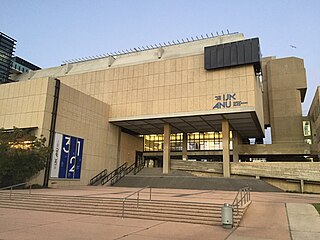
Anu – Museum of the Jewish People, formerly the Nahum Goldmann Museum of the Jewish Diaspora, is located in Tel Aviv, Israel, at the center of the Tel Aviv University campus in Ramat Aviv. The Hebrew Anuאנו means 'we, us'.
Below are notable events in archaeology that occurred in 1923.
Below are notable events in archaeology that occurred in 1916.
The year 1835 in archaeology involved some significant events.

Sylvanus Griswold Morley was an American archaeologist and epigrapher who studied the pre-Columbian Maya civilization in the early 20th century. Morley led extensive excavations of the Maya site of Chichen Itza on behalf of the Carnegie Institution and published several large compilations and treatises on Maya hieroglyphic writing. He also wrote popular accounts on the Maya for a general audience.

Maresha was an Iron Age city mentioned in the Hebrew Bible, whose remains have been excavated at Tell Sandahanna, an archaeological mound or 'tell' renamed after its identification to Tel Maresha. The ancient Judahite city became Idumaean after the fall of Judah in 586 BCE, and after Alexander's conquest of the region in 332 BCE became Hellenised under the name Marisa or Marissa. The tell is situated in Israel's Shephelah region, i.e. in the foothills of the Judaean Mountains, about 1.5 kilometres (0.93 mi) south of Beit Gubrin.

The Sardis Synagogue is a former ancient Jewish synagogue, that was discovered in the modern-day town of Sardis, in the Manisa Province, in the Aegean Region of western Turkey. The former synagogue building is now an archaeological site and Jewish museum. The archaeological site is the largest Jewish site known from antiquity.
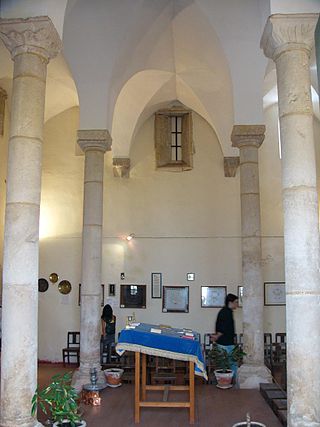
The Synagogue of Tomar is a former Jewish congregation and synagogue, located at 73 Rua Dr. Joaquim Jaquinto, in the historic center of the city of Tomar, in the Santarém District of Portugal. The medieval synagogue was completed in the Gothic style by c. 1460, and was active as a synagogue until 1496, when Jews were expelled from Portugal.
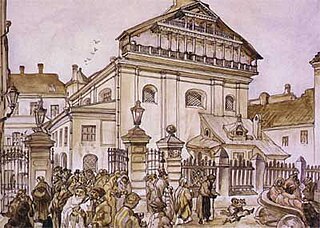
The Great Synagogue, officially, the Great City Synagogue in Vilna, also the Great Synagogue of Vilnius, is a former Orthodox Jewish congregation and synagogue, located atI-2 Jewish Street in the Old Town of Vilnius, in the Vilnius County of Lithuania.
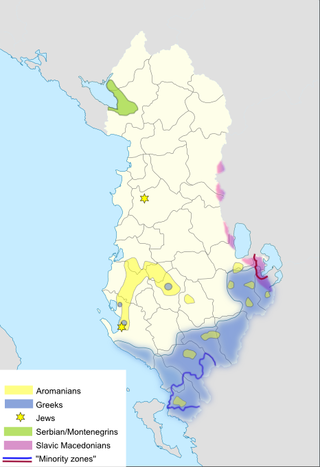
The history of the Jews in Albania dates back about 2,000 years. According to historian Apostol Kotani : "Jews may have first arrived in Albania as early as 70 C.E. as captives on Roman ships that washed up on the country's southern shores... descendants of these captives that would build the first synagogue in the southern port city of Sarandë in the fifth century...[but] Little is known about the Jewish community in the area until the 15th century."

The Mikvé Israel-Emanuel Synagogue, is a Reconstructionist Jewish congregation and synagogue, located at Hanchi di Snoa 29, Punda, in the city of Willemstad, Curaçao, a constituent country of the Kingdom of the Netherlands in southern Caribbean Sea. The congregation was established in 1651 and the synagogue was completed in 1732, making it the oldest surviving synagogue in the Americas.
The history of the Jews in Barbados goes back to the 1600s. A Jewish population has been in Barbados almost continually since 1654.

Historic synagogues include synagogues that date back to ancient times and synagogues that represent the earliest Jewish presence in cities around the world. Some synagogues were destroyed and rebuilt several times on the same site. Others were converted into churches and mosques or used for other purposes.
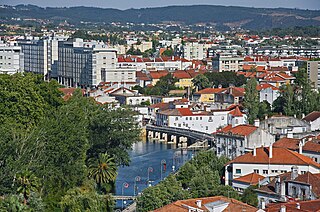
Tomar, also known in English as Thomar, is a city and a municipality in the Santarém district of Portugal. The town proper has a population of about 20,000. The municipality population in 2011 was 40,677, in an area of 351.20 km2 (135.60 sq mi).

Hammath Tiberias or Hammat Tiberias is an ancient archaeological site and Israeli national park, located at the southern end of Tiberias along the road to Zemach, on the western shore of the Sea of Galilee.
Pusilhá is an archaeological site in Belize. The location of this Late Classic Maya urban complex, along the east and west flow of trade, made the city a major transfer point for economic activities in the whole region. In addition, the city gave archaeologists a historical view of a secondary Maya site. Large and extended excavation efforts have changed the overall picture of Maya social and political relationships between larger and smaller cities and challenged the prevailing view of conquest and absorption of smaller cities into the larger cities in the region. The research conducted at Pusilhá began in 1927 and continues to this day.

Samuel Schwarz, or Samuel Szwarc, was a Polish-Portuguese Jewish mining engineer, archaeologist, and historian of the Jewish diaspora, specifically of the Sephardic and crypto-Jewish communities of Portugal and Spain. He is known for his rediscovery of the Jews of Belmonte, Portugal, and restoration of the Synagogue of Tomar.
References
- ↑ Ghiuzeli, Haim F. (1996). "The Synagogue of Tomar, Portugal". Museum of the Jewish People at Beit Hatfutsot. Museum of the Jewish People at Beit Hatfutsot . Retrieved 2020-07-09.
- ↑ Aczel, Amir D. (2015). Finding Zero: A Mathematician's Odyssey to Uncover the Origins of Numbers. St. Martin's P.ress. p. 96.
- ↑ Morley, Sylvanus Griswold (1920). The inscriptions at Copan. The Carnegie Institution of Washington. OCLC 544798.
- ↑ "Ashmolean Museum: British Archaeology Collections - O.G.S. Crawford". britisharchaeology.ashmus.ox.ac.uk. Retrieved 30 December 2017.
- ↑ "Obituary: Professor Richard Atkinson" . The Independent. 17 October 1994. Archived from the original on 2022-05-01. Retrieved 30 May 2017.
- ↑ "Obituary: John Chadwick" . The Independent. 4 December 1998. Archived from the original on 2022-05-01. Retrieved 30 May 2017.